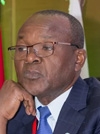
The 2017 Africa Capacity Report shows that capacity in its various dimensions, though improving, remains a problem for African economies generally, not just for Science Technology and Innovation (STI). But a more important message emerges: even though two-thirds of African countries have STI policies and strategies, their capacity to implement them remains very low.
Most African countries have underdeveloped STI institutions and fail to effectively generate and deploy knowledge and technological innovations for socioeconomic growth. This challenge largely reflects how STI institutions are adequately staffed with skills, expertise, financial resources, infrastructural capabilities, and equipment. Encouragingly, the Report shows that it is possible to build STI institutions and use them for socioeconomic transformation, with a good number of African countries providing practical success stories based on strategies and initiatives that can easily be adapted to other countries.
Notably, despite the growing emphasis on the importance of STI for Africa’s development, significant capacity bottlenecks still hinder countries from using STI in national development. Evidence suggests that African countries lack specific human and institutional capacities, critical technical skills, and resources to promote STI. To some extent, the capacity lag in STI is linked to the investment priorities of African countries, which have yet to convert their political commitments into practical programs for STI-based development. The current average of African spending on research and development (R&D) stands at about 0.5 percent—below the one percent of GDP pledged in 1980 and again in 2005. Unless countries build STI capacities to innovate and promote STI for development, Africa risks being left behind in the race toward inclusive globalization.
Among the key findings, the Report shows that 91 percent of the 44 surveyed African countries consider training a High or Very High priority in STI. Other areas also rated as High or Very High priority were information and communications technology (ICT) infrastructure (80 percent), patent rights and trademarks (80 percent), investment (75 percent), production/publication of scientific papers (72 percent), policy/strategy (70 percent), regulation/laws (65 percent).





